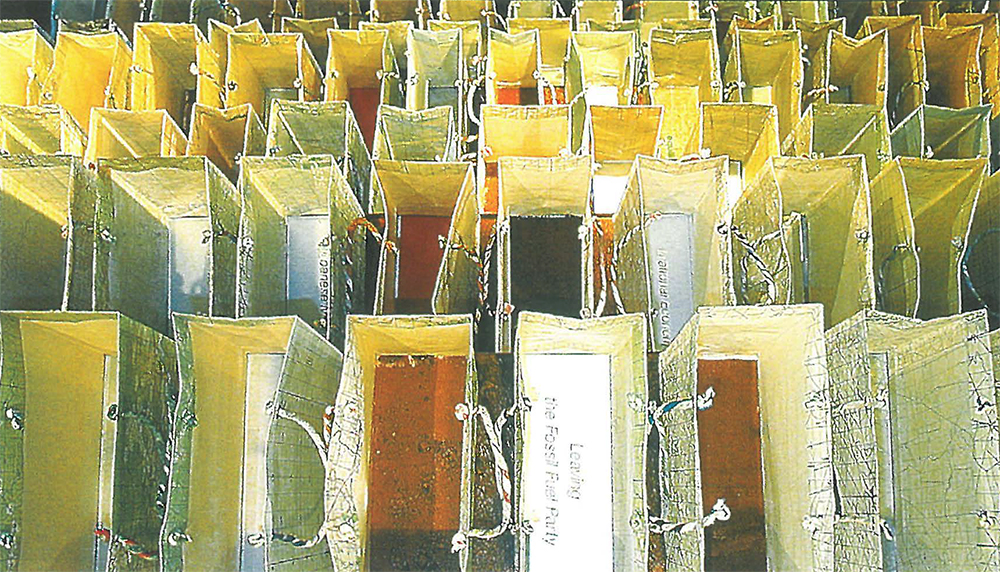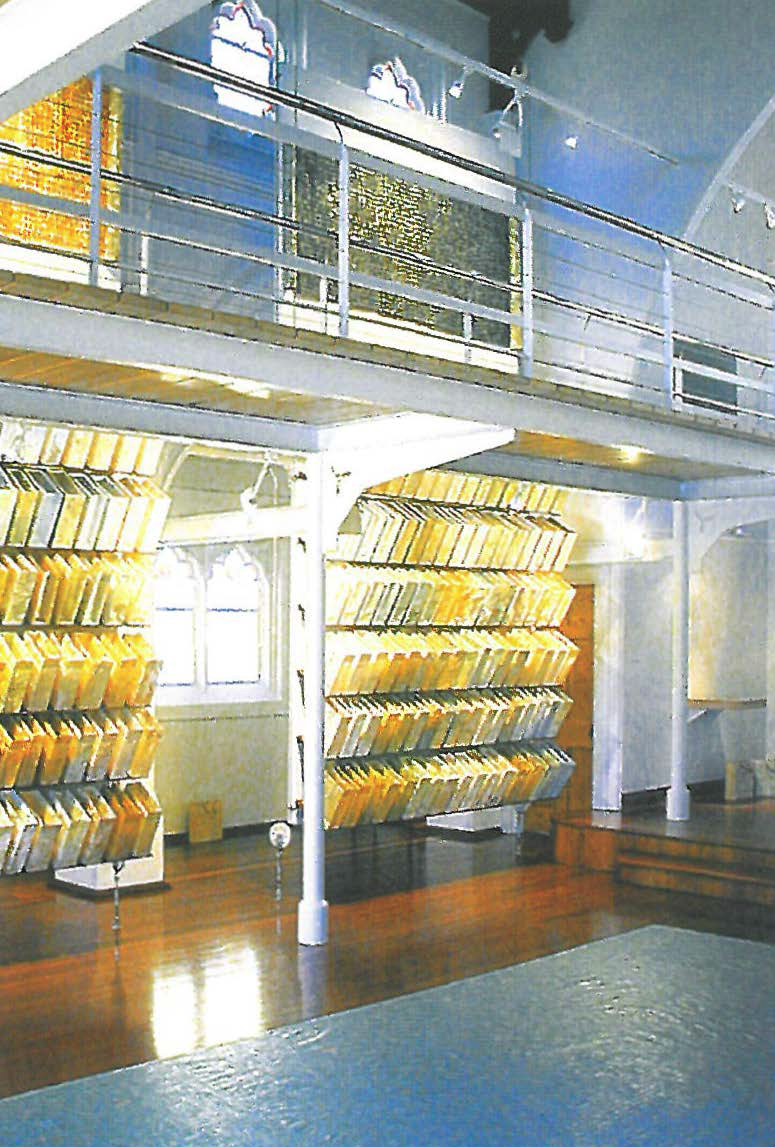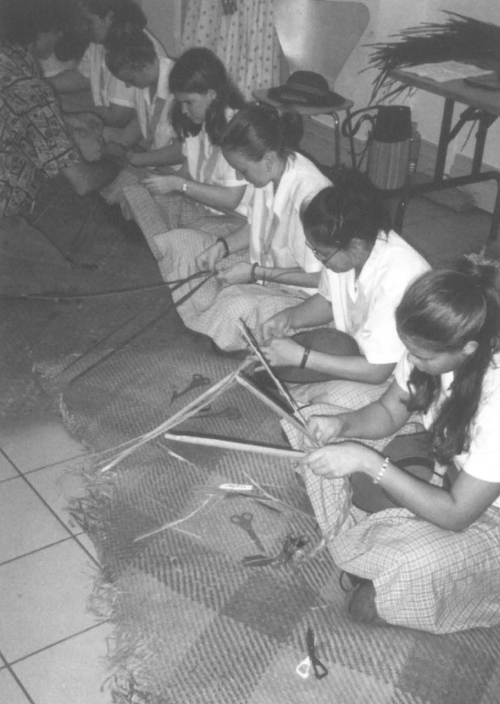
A few years ago Nien Schwarz's work would have probably been called conceptual art, a term that denotes an esoteric type of art practice, and usually one with ambivalent intentions. I prefer to call her an eco-artist, because of her work's specific content and intent. Admitting her "increasing reverence for the Earth and its ecology", Schwarz declares: "my works embody earth directly, are manufactured from it, or contain information about it."
Schwarz comes from a family of geoscientists, has degrees in science and art, and has worked for many years with geological survey teams. Her works show a loving obsession with the tools and materials of her trade: maps, core samples, grids and dirt. She draws inspiration from her sensuous relations with the earth, and considers it the best antidote to the artificial world of mindless consumption that she blames for the ecological crisis.
Consumption is the chief concern of three works: Clearance, Search and Mine/mine. In each the same basic unit is repeated many times. This unit is an unused shopping bag. Made from detailed survey maps, the bags have been carefully oiled to transform the paper into a translucent red- and blue- veined skin like appearance. The bags are beautiful highly crafted up-market objects, true visual fetishes. In our shopping bags we carry our souls; but these bags are empty. However, when looking inside, on the bottom we see text adhered to a mirrored surface. The text generally refers to various cultural attitudes to landscape. Each bag, then, is a container made from signs (maps) which hold other signs. And like these bags, the sign in alphabetic language is empty. Empty visual signifiers that refer to nothing but their own autonomy and narcissistic affects. Schwarz clearly delights in visual signs, be they cartographic ones or the ironic and playful potential of written words - as in 'Mine/mine'. However the power of her work plays on what these signs omit - lived sensuous reality. Nearly every sign she uses shares the one referent: earth. And one other referent: us. The autonomous sign is the sign of literate humans. Indeed, these bags can be read as metaphors for the post-industrial human body, a carrier of empty signifiers that have lost touch with their lived world.

In oral cultures humans think with nature. Oral languages are deeply connected to the rhythms of the sensuous body and its lived space. In literate cultures language retreats to abstract visual signs. The Aboriginal language group names printed on the bags in 'Mine/mine' are the brand of an alphabetic colonising culture. These postcolonial written signs are purely visual, autonomous and disconnected from their referent. Print cultures deepen the autonomy of the written sign, to the extent that it takes on the spatiality of the squared page. This spatiality permeates Schwarz's work, no matter how much she deconstructs it. Even the sheer excess of maps, which makes any cartographic reading of the exhibition impossible, only affirms the logic of the sign. Schwarz confronts the essential issue of eco-art: the place of earth in the era of signs.
The Palimpsest series, in which Schwarz rubs dirt into maps that have been cut-up into small squares and collaged back together, is the most direct attempt to picture the earth in the age of the sign. But the more Schwarz cuts up the map, the more its spatiality is reproduced. The map may no longer be readable, but its logic continues. And when she rubs earth into the collaged maps, obliterating their neat lines, it is not the maps which are stained by the earth, but the grid of the collage which stains and haunts the film of earth, transforming its naturalness into a sort of pre-lingual structure.
Eco-art can not just celebrate the earth. It must, as Schwarz does, deal with the melancholy of our times - thus the title of the exhibition, Promised Land (note: a catalogue is available on request).The most poignant and certainly most melancholy work (for me) is Migrations, a large floor piece made from small squares of cut up maps collaged together into a fantasy landscape. It is an immense sea of blue with hardly a landfall. We drown in the sheer quantity of cartographic lineaments, grids and the blue, this very saturation of signs annulling their signifying purposes. Like the Biblical flood that inaugurated our primordial migration across the four-corners of the earth, it too prophesies a coming catastrophe that all the power of our signs, it seems, can not stop.












